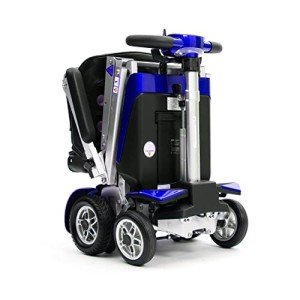The 12 Most Obnoxious Types Of Users You Follow On Twitter

Mobility Scooters: A Comprehensive Guide
Mobility scooters have become a necessary mode of transport for lots of people facing mobility difficulties. This short article checks out the numerous facets of mobility scooters, including their types, benefits, functions, and a guide for prospective purchasers.
Understanding Mobility Scooters
Mobility scooters are electrically powered gadgets designed for individuals with limited mobility. They supply a method of transportation for individuals who may have trouble strolling but still wish to keep their self-reliance. They are available in various designs and features to accommodate a large range of requirements.
Types of Mobility Scooters
Mobility scooters can normally be categorized into 3 primary types:
| Type | Description | Best For |
|---|---|---|
| Compact Scooters | These are small and lightweight, ideal for indoors and short trips. | Users with restricted storage space or those who take a trip often. |
| Mid-size Scooters | A balance in between portability and stability, ideal for both indoor and outside use. | Those who need to cover a variety of surfaces. |
| Sturdy Scooters | Large and robust, developed for rugged outside use and much heavier individuals. | Users needing additional weight capability or going off-road. |
Secret Features of Mobility Scooters
The choice of mobility scooter typically depends on the functions that line up with specific needs. Here are a few of the key functions to consider:
- Weight Capacity: Mobility scooters come with different weight limitations. It is essential to pick a scooter that can properly support the user's weight.
- Variety: The distance a scooter can take a trip on a single charge differs. Depending on user needs, one may select scooters with a series of up to 40 miles.
- Speed: Most mobility scooters can reach speeds between 4 to 8 mph. Consider what speed is comfortable and safe for the intended environment.
- Turning Radius: A compact turning radius is essential for indoor usage, permitting easier navigation in tight areas.
- Battery Type: The kind of batteries used can affect the scooter's performance. Lead-acid and lithium-ion batteries are the most common.
Benefits of Using Mobility Scooters
The advantages of mobility scooters extend beyond just transport. Some key benefits consist of:
- Independence: Users can navigate their environment without relying on caretakers, promoting self-reliance and confidence.
- Health Benefits: Using a scooter can encourage outdoor activity, causing physical and psychological health enhancements by decreasing sensations of isolation.
- Convenience: Scooters can easily be run in numerous environments, whether inside, in shopping center, or outdoors.
Crucial Considerations When Buying a Mobility Scooter
When purchasing a mobility scooter, numerous factors to consider can help ensure that you choose the best design:
Assess Individual Needs:
- Mobility level: Consider just how much assistance the person will need.
- Variety of use: Determine where the scooter will mostly be used (inside your home, outdoors, on rough terrains, etc).
Test Drive:
- Always test drive a number of designs to discover an appropriate fit. Take note of convenience, ease of steering, and the scooter's responsiveness.
Evaluation Safety Features:
- Look for scooters with adequate security functions like lights, indications, and anti-tip designs.
Check Warranty and Service Options:
- A reputable warranty and available service options are crucial for long-term usage.
FAQs about Mobility Scooters
1. How quick do More Material go?Mobility scooters normally have speeds varying from 4 to 8 mph, with most developed for safety rather than high-speed travel. 2. Exist weight limitations on mobility scooters?Yes, mobility
scooters feature specific weight limits, typically ranging from
250 lbs to over 500 pounds, depending upon the design. 3. Can mobility scooters be used indoors?Certain designs, particularly compact scooters, are specifically designed for
indoor usage and are simpler to steer in tight spaces. 4. How often do the batteries need to be replaced?Battery life can differ based on use, however normally, with correct care, batteries might last in between 1 to 3 years before needing replacement
. 5. Are mobility scooters covered by insurance?Coverage can vary, however some insurance coverage strategies, consisting of Medicare and Medicaid, might cover part of the cost. It's recommended to talk to private insurance coverage suppliers. Mobility scooters work as a
valuable tool for lots of people, enabling them to keep
their freedom and self-reliance. By understanding the different types and functions of mobility scooters, people can make educated decisions tailored to their particular needs.
Whether used for errands, interacting socially, or leisurely activities, mobility scooters can boost the quality of life for those with mobility limitations. Purchasing a mobility scooter is a decision that can substantially impact a person's life. Therefore, individuals need to thoroughly assess their choices and choose a model that best lines up with their lifestyle and mobility requirements
.

